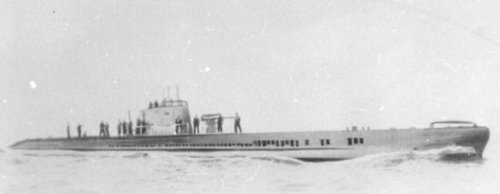

Wilk 1940
| Name | No | Yard No | Builder | Laid down | Launched | Comp | Fate |
| Ryś | A C de la Loire, Nantes, France | 5/1927 | 22.4.1929 | 8/1931 | interned in Sweden 17.9.1939 - 10.1945, BU 1956 | ||
| Wilk | A C Augustin-Normand, Le Havre, France | 1927 | 12.4.1929 | 10/1931 | BU 1954 | ||
| Żbik | 81 | CNF, Caen, France | 1927 | 14.6.1930 | 2/1932 | interned in Sweden 27.9.1939 - 10.1945, BU 1956 |
|
Displacement standard, t |
|
|
Displacement normal, t |
980 / 1248 |
|
Length, m |
78.5 |
|
Breadth, m |
5.90 |
|
Draught, m |
4.20 |
|
No of shafts |
2 |
|
Machinery |
2 Normand-Vickers diesels / 2 electric motors |
|
Power, h. p. |
1800 / 1200 |
|
Max speed, kts |
14.5 / 9.5 |
|
Fuel, t |
diesel oil 139 |
| Endurance, nm(kts) | 7000(10) / 100(5) |
|
Armament |
1 x 1 - 100/40 Schneider QF, 1 x 1 - 40/37 2pdr QF Mk III, 6 - 550 TT (4 bow, 1 x 2 trainable, 10), 38 mines |
|
Complement |
54 |
| Diving depth operational, m | 80 |
Project history: Built under "small programme" of 1924. Submarines were ordered 1.12.1926 in France and represented increased variant of French submarines of Saphir class.
Differed good seaworthiness, but were noisy, oil fuel tanks in an outer hull at the slightest damage leaked and fuel was polluted. Minelaying system of Normand-Funeau was complex and had low reliability. Four TTs took places in the pressure hull, two more out of a pressure hull in aft trainable mount. Double-hulled. Self-sufficiency was 35 days.
Modernizations: 1935, all: - 1 x 1 - 40/39; + 1 x 2 - 13.2/76
1940, Wilk: + hydrophone
Naval service: Ryś and Żbik were interned in Sweden 17 and 27.9.1939 respectively. After war in October, 1945 they returned to Poland and were broken up in 1956.
Wilk at beginning of war escaped to Britain and arrived Rosyth 20.9.1939. She was used for training since September, 1940 and 2.5.1942 was laid up into reserve. In 1951 Wilk returned to Poland.

Ryś
Many thanks to Wolfgang Stöhr for additional information on this page.
© Ivan Gogin, 2009-16